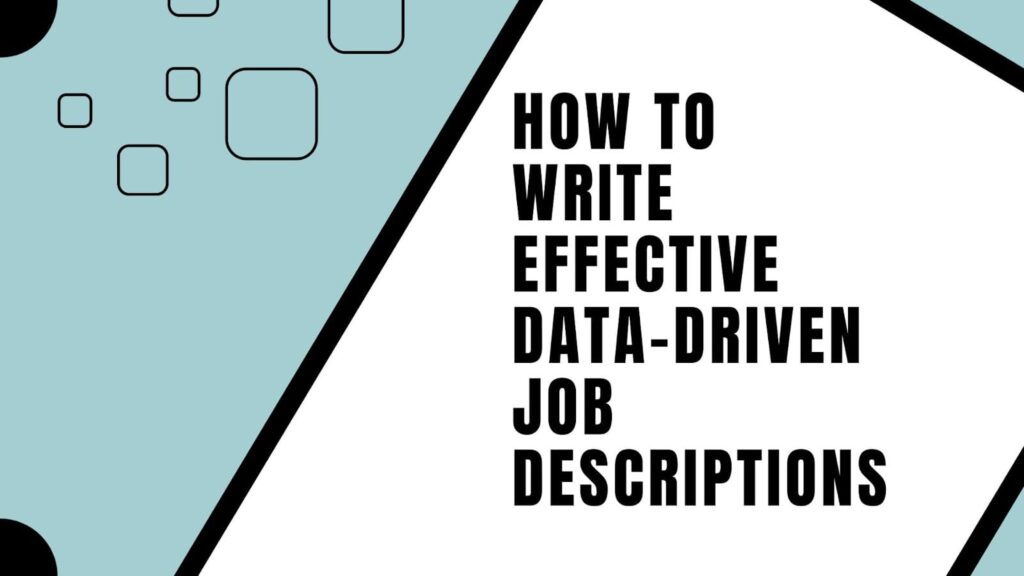When applying for a job, you might glance at the Job Description (JD) without giving it much thought. But did you know that a JD is more than just a list of responsibilities? It plays a crucial role in hiring decisions, salary negotiations, and even your career growth. For recruiters, it helps attract the right candidates, while for job seekers, it sets clear expectations. In this guide, we’ll dive deep into what a JD really means, what is JD full form in different contexts, why it’s important, and how to use it to your advantage in the hiring process.
Table of Contents
ToggleWhat is JD Full Form?
In the context of job listings, Full form of JD stands for “Job Description.” It serves as a guideline for both employers and job seekers, providing essential information about the role’s expectations, required skills, experience level, and sometimes the company’s culture and values.
What is Job Description?
A job description(JD) outlines the responsibilities, duties, qualifications, and other pertinent details related to a specific job position within an organization. Job descriptions help candidates assess whether they are suitable for the position and assist employers in attracting qualified applicants by clearly communicating the role’s requirements and expectations.
Purpose and Objective of Job Descriptions
Clarifying Expectations: Job descriptions define the scope of work and clarify the responsibilities associated with a particular role, ensuring alignment between employer expectations and employee performance.
Facilitating Recruitment: By outlining the qualifications, skills, and experience required for a position, job descriptions help attract qualified candidates and streamline the recruitment process.
Supporting Performance Management: Job descriptions serve as benchmarks for evaluating employee performance, setting goals, and identifying areas for professional development and growth.
Promoting Compliance: Job descriptions ensure compliance with legal and regulatory requirements by clearly defining job duties, non-discrimination policies, and occupational health and safety standards.
What are the Main Objectives of Job Description(JD)?
The main objectives of a job description (JD) are to clearly define the roles, responsibilities, expectations, and requirements of a particular job position within an organization. JDs serve to guide recruitment efforts by attracting suitable candidates, facilitate effective performance management by setting clear goals and objectives, ensure legal compliance with labor laws and regulations, support career development and training initiatives, and establish a framework for evaluating employee performance and contributions within the organization’s structure and culture.

Why are Job Descriptions (JDs) Important?
Job descriptions (JDs) play a crucial role in the recruitment and management processes of organizations for several reasons:
- Clarity and Transparency: Job descriptions provide clear and transparent guidelines about the roles and responsibilities associated with a particular job position. They outline what is expected from the employee, helping candidates understand if they are suitable for the role.
- Recruitment and Hiring: JDs serve as a foundation for recruitment efforts. They help attract qualified candidates by outlining the skills, experience, and qualifications required for the job. A well-written JD can help organizations target the right talent pool and streamline the hiring process.
- Performance Management: Job descriptions form the basis for evaluating employee performance. By clearly defining expectations and responsibilities, JDs help employees understand what they need to accomplish in their roles. Managers can use JDs as a reference point when conducting performance reviews and providing feedback.
- Legal Compliance: Job descriptions can assist organizations in maintaining legal compliance. They can help ensure that job requirements and expectations align with labor laws, regulations, and company policies. This can be especially important in areas such as equal employment opportunity (EEO) compliance and fair labor standards.
- Career Development and Training: JDs provide employees with a clear understanding of the skills and competencies required for their current role. They can also serve as a roadmap for career development and training opportunities, helping employees identify areas for growth and advancement within the organization.
Overall, job descriptions serve as a foundational tool for effective talent management, providing clarity, structure, and alignment between organizational goals and individual responsibilities.
Points to Note While Creating a Job Description
When creating a job description (JD), several key points should be kept in mind to ensure it effectively communicates the role’s requirements and expectations while attracting the right candidates:
- Clear Job Title: Choose a job title that accurately reflects the role and its level within the organization. Avoid overly vague or trendy titles that may confuse candidates.
- Concise Overview: Provide a brief overview of the role, its purpose, and its place within the organization. This helps candidates understand the context and importance of the position.
- Detailed Responsibilities: Clearly outline the primary duties and responsibilities associated with the role. Focus on essential tasks and functions that the employee will be expected to perform on a regular basis.
- Qualifications and Requirements: Specify the skills, experience, education, and certifications necessary to succeed in the role. Distinguish between “must-have” qualifications and “nice-to-have” qualifications to help candidates assess their fit for the position.
- Company Culture and Values: Briefly describe the company’s culture, values, and mission statement to give candidates insight into the organization’s ethos and working environment.
- Reporting Structure: Clearly define the reporting relationships within the organization, including the role’s supervisor, direct reports (if applicable), and any cross-functional collaborations.
- Performance Expectations: Outline specific performance metrics, goals, and objectives that the employee will be expected to achieve in the role. This helps align expectations and provides a basis for performance evaluations.
- Salary and Benefits: If appropriate, include information about salary range, benefits, and other perks associated with the role. While exact compensation details may not always be disclosed, providing a general overview can help manage candidate expectations. Understanding executive compensation accounting is also crucial for organizations to ensure compliance and transparency in financial reporting.
- Language and Tone: Use clear, concise language and a professional tone throughout the job description. Avoid jargon, industry-specific acronyms, or overly technical language that may alienate potential candidates.
- Inclusive Language: Ensure the job description uses inclusive language that welcomes candidates from diverse backgrounds and experiences. Avoid biased language or requirements that may inadvertently exclude qualified candidates.
By keeping these points in mind, organizations can create comprehensive and compelling job descriptions that effectively attract top talent while providing clear expectations for both candidates and hiring managers.
Benefits of a Job Description (JD)
A job description serves as a foundational document for both employers and employees, playing a crucial role in the recruitment and management processes. Here are the key benefits and importance of a job description:
Clarifies Expectations:
Provides clear information about the role’s responsibilities, duties, and expectations, helping candidates and employees understand what is expected from them.
Aids in Recruitment:
Helps attract the right candidates by detailing the necessary skills, experience, and qualifications required, making it easier for potential applicants to assess their suitability for the position.
Enhances Employee Alignment:
Ensures that employees are aligned with their roles and responsibilities, contributing to better performance and job satisfaction.
Facilitates Performance Evaluation:
Serves as a benchmark for evaluating employee performance by comparing their work against the established responsibilities and goals outlined in the job description.
Supports Legal Compliance:Provides a basis for demonstrating non-discriminatory hiring practices and can protect the company in cases where employment disputes arise.
Importance of a Job Description
- Streamlines Hiring Process:
By clearly defining what the job entails, it streamlines the hiring process, helping to filter out unqualified applicants early and focusing on those who meet the specified criteria.
- Career Development:
Acts as a guide for career progression within the company, showing employees potential career paths and the requirements for advancing to higher roles.
- Resource Allocation:
Helps in planning and allocating resources by defining the scope of job roles, which aids in organizational structuring and workload distribution.
- Training and Development:
Identifies training needs by outlining the skills and competencies required for the job, helping organizations plan effective training and development programs.
- Conflict Reduction:
Minimizes role ambiguity and conflict among staff by clearly delineating job boundaries and responsibilities, promoting a harmonious work environment.
Overall, a well-crafted job description is an essential tool that supports organizational efficiency, employee satisfaction, and strategic human resource management.

How to Write an Effective Job Description
Crafting an effective job description requires attention to detail, clarity of language, and a thorough understanding of the position. Here are key elements to consider:
Job Title: Clearly state the job title, reflecting the level of the position and its role within the organization.
Job Summary: Provide a brief overview of the position, highlighting its primary objectives, responsibilities, and key deliverables.
Responsibilities: Outline the specific duties, tasks, and responsibilities associated with the role, emphasizing essential functions and expectations.
Qualifications and Requirements: Specify the education, experience, skills, and competencies required for the position, including technical proficiencies, certifications, and relevant experience.
Reporting Structure: Indicate the reporting relationships, including supervisory roles, team collaboration, and departmental hierarchy.
Compensation and Benefits: Optionally, include information on salary range, benefits package, and other perks associated with the position.
Best Global Manpower Supply Companies

Step-by-Step Procedure for Writing Data-Driven Job Descriptions
Below we have discussed some of the most essential steps to be followed for writing data-based job descriptions.
1. Define Job Title, Qualifications & Responsibilities
First, you must clearly define and write the “Job Title,” “Qualifications,” and “Responsibilities.” It is recommended to keep the title as clear and concise as possible. It should not be ambiguous. For instance, if you are hiring for a “Content Writer,” then don’t write “Content Editor,” or “Content Creator.” Be specific.
Moreover, mention the required qualifications including study level (graduate, masters, etc.) and skills that the ideal candidate should possess to secure the job. Talking about responsibilities, it is necessary to clearly highlight the key tasks or duties the candidate needs to perform after being hired.
Pro Tip: It would be great, if you mention responsibilities in the form of bullet points, as they are usually easier to skim, compared to plain paragraphs.
2. Use Data to Inform Compensation
This is the step that will help you to write a data-driven job description. You should perform in-depth market research to determine the average salary range for the required job.
Based on the gathered data, you should then decide whether the salary matches your organization’s compensation structure or not. Once the evaluation is done, write down the offered salary in the description.
Not only this, but you should highlight other benefits along with the overall salary. This involves mentioning health insurance, retirement plans, paid time off, and many more. Doing so will help demonstrate your company’s commitment to employee well-being, increasing the overall chances of attracting top talent for the job.
3. Focus on Highlighting Company Values Using Data Insights
You should not only use data-driven insights to address compensation in the job description. It can also be used to highlight your organizational values and culture.
For example, you can highlight how much revenue your company has generated for its clients in recent years. Besides this, you can also mention reputable clients your organization has worked with. This will help win the applicant’s trust.
Moreover, it is recommended to clearly articulate your company’s goals and vision in the job description. This way, you will have the chance to attract candidates with a similar mindset and future planning.
Useful Tip: Do not forget to mention opportunities for growth to grab the interest of a large number of candidates.
4. Embrace Conciseness
Whether you are writing a normal job description or data data-driven, embracing conciseness is crucial. This is because it has been noticed that many job seekers have short attention spans when interacting with descriptions online.
By keeping them concise and to the point, you can make sure all the essential details are communicated effectively without losing their interest.
When it comes to the question of how to remain brief while writing a data-driven job description, then the rule of thumb is to avoid the use of unnecessary wording and try to write shorter alternatives of longer words. For example, instead of writing “In addition to,” you can go with “Additionally” both have the same meaning.
Even after following this approach, if you are still struggling to embrace conciseness, then a summarizer tool will come in handy. It will precisely condense your given job description by removing all the extra wording and information.
5. Proofread
Whenever you write something, don’t forget to proofread it at the end. This also applies to data-driven job descriptions. You should proofread the description to make sure there are no grammar, spelling, or punctuation mistakes. If such errors are left unchecked, they can greatly harm your company’s reputation.
Also, while proofreading, you should ensure every essential detail about the job description is covered properly. If not, don’t hesitate to make any changes.

FAQs on Job Descriptions
1. What does JD stand for in jobs and HR?
JD stands for Job Description, a document outlining the duties, responsibilities, qualifications, and expectations for a specific role.
2. Why is a Job Description important for employers and candidates?
A JD helps employers attract the right candidates and set clear role expectations, while job seekers use it to assess if the position aligns with their skills and career goals.
3. What are the key components of a Job Description?
A JD typically includes the job title, responsibilities, qualifications, skills required, salary range (if mentioned), and company details.
4. How can I use a Job Description to tailor my resume?
Analyze the keywords and required skills in the JD and align them with your resume to increase your chances of passing ATS screening and getting shortlisted.
5. Do all companies provide detailed Job Descriptions?
Not always. Some companies offer brief descriptions, while others provide extensive details about the role, expectations, and work culture.
6. How is a JD different from a Job Specification?
A JD describes the duties and responsibilities of a role, whereas a Job Specification focuses more on the qualifications, skills, and experience needed for the position.
7. Can I negotiate job responsibilities if I don’t meet all JD requirements?
Yes, many employers are flexible. If you meet most qualifications, highlight your transferable skills and discuss any gaps during the interview.
8. Where can I find JDs for different job roles?
Job descriptions are available on company career pages, job portals, LinkedIn job listings, and HR websites.


